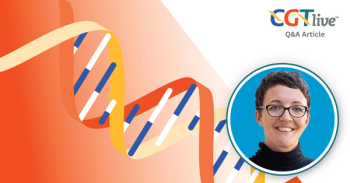
Sequential Immunotherapy May Not Be Optimal Treatment for TP53+ MCL, But Potentially TP53 Wild-Type Disease
December 18, 2020 - Sequential immunotherapy with rituximab-based therapy and the addition of lenalidomide proved effective among patients with TP53 wild-type mantle cell lymphoma, even among those with a Ki-67 level of at least 30% and/or blastoid morphology.
Although associated with high rates of response, sequential immunotherapy with rituximab (Rituxan)-based therapy and the addition of lenalidomide (Revlimid) did not improve outcomes in an overall cohort of patients with mantle cell lymphoma (MCL). Among patients with TP53 wild-type MCL, however, this treatment proved effective, even among those with a Ki-67 level of at least 30% and/or blastoid morphology, according to data from a phase 2 study that were presented during the 2020 ASH Annual Meeting and Exposition.1
At a median follow-up among survivors of 3.3 years, the 3-year progression-free survival (PFS) rate was 63% and the 3-year overall survival (OS) rate was 87% in all evaluable patients in the study, reported lead investigator Zachary D. Epstein-Peterson, MD, who presented the data during the virtual meeting.
When examined by TP53 mutation status, the 3-year PFS rate, which was the primary endpoint, was 77% in those with wild-type and was 12% in those with mutated TP53, with a significant difference between the groups (P<0.0001).
Only TP53 mutation status significantly influenced PFS.
“Patients with high-risk and TP53 wild-type fared no worse than patients who had low-risk and TP53 wild-type disease,” said Epstein-Peterson, who is a medical oncology fellow at Memorial Sloan Kettering Cancer Center. “We feel that our data substantiate other data suggesting that targeted therapy should be frontline standard of care for TP53-mutant MCL rather than immunochemotherapy.”
The study enrolled patients with untreated stage II to IV MCL and adequate organ function. Patients were treated in 3 phases:
- Lenalidomide (15 mg/day on days 1-14) plus R-CHOP) for 4 21-day cycles;
- Rituximab plus cytarabine (R-HiDAC) for 2 cycles (initially age-based dosed at cytarabine 1-3 g/m2);
- Rituximab monthly plus lenalidomide (15 mg/day) for 6 months.
Excessive hematologic toxicity at 3 g/m2 of cytarabine was observed in an interim analysis after 16 patients were enrolled, and this dosage was subsequently removed from the schema.
PET scans were completed at baseline and following each phase of treatment, and minimal residual disease (MRD) was assessed at those same time points and additionally at 6 months following end of treatment using the clonoSEQ Assay. Response duration could be predicted by MRD status 6 months following the end of treatment at a sensitivity of 10-6.
The median age was 63 years, 28% of those assessed had a TP53 mutation, 23% had TP53 deletion, and 11% had both TP53 mutation and deletion. Thirty-one (65%) patients were considered to be high risk based on a Ki-67 of at least 30% or presence of blastoid disease.
Of 49 patients enrolled, 47 were evaluable for response. The objective response rate (ORR) was 91% (43/47), with all responses being complete response (CR). Of these 43 patients with CR, 24 remain in ongoing remission, 18 have relapsed, and 1 was lost to follow-up.
An acceptable PFS rate was defined as at least 75%, and unacceptable was 60% or lower. These cut points were chosen based on historical comparison, said Epstein-Peterson, in which the expected 3-year PFS rate is 75% to 80% for low-risk patients and 50% for high-risk patients.
MRD Assessments and Outcomes
More than half of patients (68%) were MRD-negative at the 10-5 sensitivity level following lenalidomide/R-CHOP. Patients who were MRD-positive who converted to MRD-negative after R-HiDAC fared no worse by PFS (P = .36), leading to the interpretation that MRD status following lenalidomide/R-CHOP did not predict long-term PFS.
Almost all (97%) patients were MRD-negative following R-HiDAC, including 11 who had MRD-positive who converted to MRD-negative disease. One patient who was still MRD-positive at the end of R-HiDAC had refractory disease.
MRD evaluation at the end of treatment predicted PFS. Among the 37 patients with MRD results, only 4 were MRD-positive, 2 of whom were simultaneous (within 2 weeks of testing) with relapse. “The remaining 2 MRD-positive patients had a shortened PFS compared with the nonrelapsed MRD-negative patients [5.2 months vs 34.8 months; P < .001],” said Epstein-Peterson.
Eighty-eight percent of the 32 patients remained MRD-negative 6 months following end of treatment. Three patients converted from MRD-negative to -positive within 6 months of completing maintenance treatment, and all 3 relapsed. The findings suggests that a more prolonged period of maintenance may be beneficial, he said.
At MRD assessment at the 10-6 sensitivity level 6 months following end of treatment, the median PFS was 34.5 months in those who were MRD-negative at this level vs 12.1 months for those who were MRD-positive (P < .0 01).
Assessment of 10-5/10-6 discordance (positive at 10-6 and negative at 10-5) at 6 months following the end of treatment suggests that MRD analysis at 10-6 sensitivity was a more powerful predictor of relapse and PFS.
Reference
Epstein-Peterson ZD, Batlevi CL, Caron P, et al. Frontline sequential immunochemotherapy plus lenalidomide for mantle cell lymphoma incorporating MRD evaluation: phase II, investigator-initiated, single-center study. Presented at: 2020 ASH Annual Meeting and Exposition; December 4-8, 2020; virtual. Abstract 119.
Newsletter
Stay at the forefront of cutting-edge science with CGT—your direct line to expert insights, breakthrough data, and real-time coverage of the latest advancements in cell and gene therapy.

























